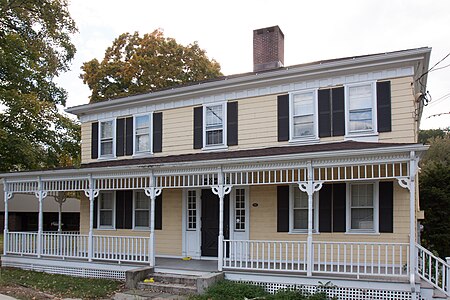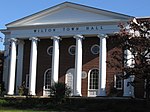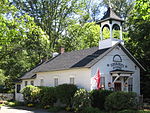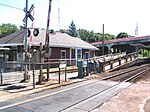Marvin Tavern
Buildings and structures in Wilton, ConnecticutConnecticut Registered Historic Place stubsGeorgian architecture in ConnecticutHouses completed in 1760Houses in Fairfield County, Connecticut ... and 2 more
Houses on the National Register of Historic Places in ConnecticutNational Register of Historic Places in Fairfield County, Connecticut

The Marvin Tavern, also known as Matthew Marvin House, is a historic house located at 405 Danbury Road in Wilton, Connecticut, Located adjacent to Wilton High School. It is a 2+1⁄2-story wood-frame structure, with a hip roof and a large central chimney. Although it was built c. 1760, its most prominent feature is its porch, added c. 1880, which features turned posts, a spindled frieze, and decorative jigsawn brackets. It is also of interest to architectural historians for a number of features, including its flared eaves, which were rare in the region before the 19th century.The house was listed on the National Register of Historic Places in 1984.
Excerpt from the Wikipedia article Marvin Tavern (License: CC BY-SA 3.0, Authors, Images).Marvin Tavern
Danbury Road,
Geographical coordinates (GPS) Address Nearby Places Show on map
Geographical coordinates (GPS)
| Latitude | Longitude |
|---|---|
| N 41.211666666667 ° | E -73.432777777778 ° |
Address
Wilton Public Schools
Danbury Road
06897
Connecticut, United States
Open on Google Maps










